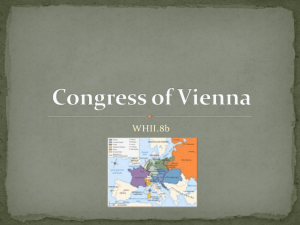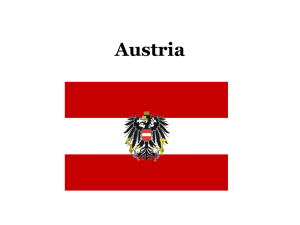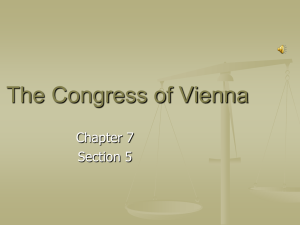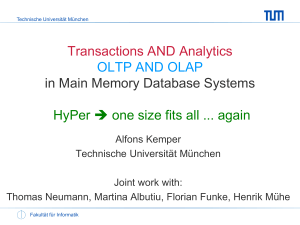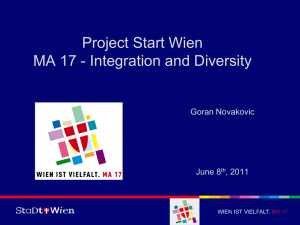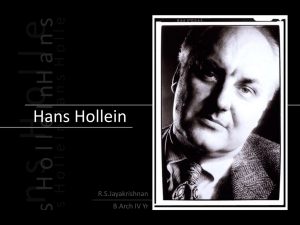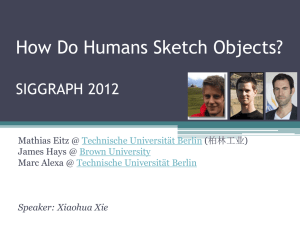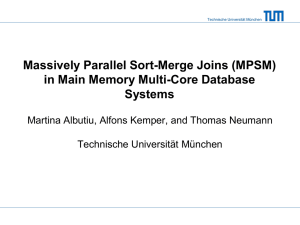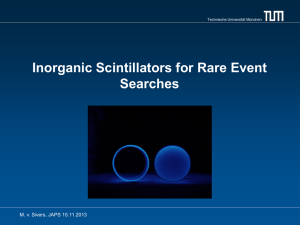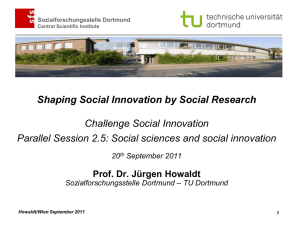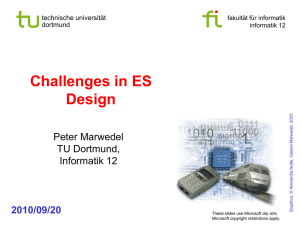P-recovery from waste water
advertisement
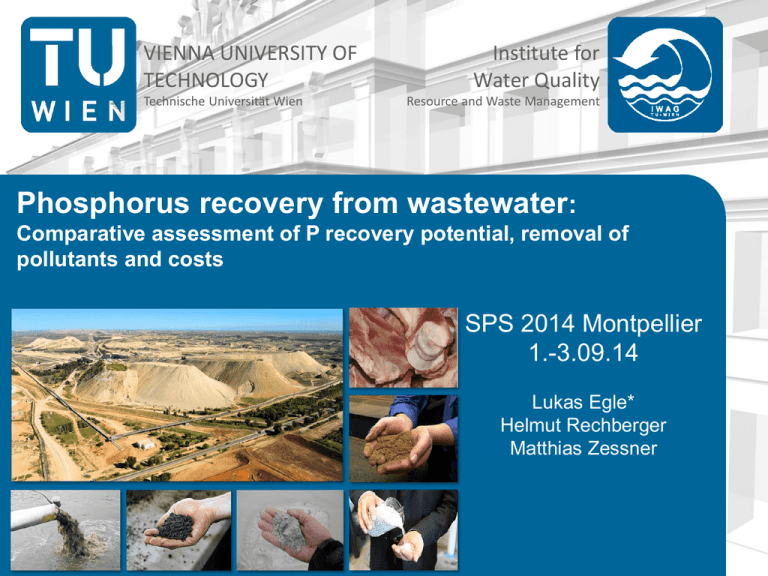
VIENNA UNIVERSITY OF TECHNOLOGY Institute for Water Quality VIENNA UNIVERSITY OF TECHNOLOGY Technische Universität Wien Technische Universität Wien Resources and Waste Management Institute for Water Quality Resource and Waste Management Phosphorus recovery from wastewater: Comparative assessment of P recovery potential, removal of pollutants and costs SPS 2014 Montpellier 1.-3.09.14 Lukas Egle* Helmut Rechberger Matthias Zessner Name der Veranstaltu ng VIENNA UNIVERSITY OF TECHNOLOGY Technische Universität Wien Institute for Water Quality Resources and Waste Management Introduction • National P budgets exhibit great P potential in wastewater and meat and bone meal • Great progress in the recovery of wastewater P • Manifold technological approaches are available • Unfortunately, comparability is often not given (Decision makers, politics) • Study „P-Recycling from Waste Water“ at the Vienna Technical University • Integrated comparative technological, environmental and economic assessment • Todays focus: ① P recovery potential ② heavy metal depollution and ③ costs 1 VIENNA UNIVERSITY OF TECHNOLOGY Institute for Water Quality Resources and Waste Management Technische Universität Wien Exkurs: Urban P potential Latest data Austria Mineral fertilizer application 11.400 t P/a or 1,4 kg P/inh.*a Sewage Sludge 6.600 t P/a or 0,80 kg P/inh.*a Meat and Bone Meal ~4.000 t P/a or ~0,50 kg P/inh.*a 2 VIENNA UNIVERSITY OF TECHNOLOGY Technische Universität Wien Institute for Water Quality Resources and Waste Management Overview: P recovery technologies 3 VIENNA UNIVERSITY OF TECHNOLOGY Technische Universität Wien Institute for Water Quality Resources and Waste Management Methodology: Material Flow Analysis (MFA) • Reference processes und reference system (100.000 PE) • Modular system 4 VIENNA UNIVERSITY OF TECHNOLOGY Technische Universität Wien Institute for Water Quality Resources and Waste Management Example: Path of P and heavy metals 5 VIENNA UNIVERSITY OF TECHNOLOGY Technische Universität Wien Institute for Water Quality Resources and Waste Management Methodology: Costs • MFA is the basis for resource- and energy demand, occurring products and wastes (life-cycle-inventory) • Investment costs from feasibility studies and other calculations (high uncertainty) • Revenue for the product was calculated for the contained nutrients (no market so far → high uncertainty) • Breakdown of costs – Running costs – Annual costs • Take into account the whole system 6 VIENNA UNIVERSITY OF TECHNOLOGY Technische Universität Wien Institute for Water Quality Resources and Waste Management Result: P recovery potential Sludge Water: 20–30 % with respect to WWTP influent National: ~16 % Sewage sludge: 40–70 % with respect to WWTP influent National: 30–36 % Sewage sludge ash: 65–85% with respect to WWTP influent National: 62–81 % 7 VIENNA UNIVERSITY OF TECHNOLOGY Technische Universität Wien Institute for Water Quality Resources and Waste Management Removal of heavy metals (I) • No heavy metal removal necessary in sludge water • Very good heavy metal removal with almost all recycling technologies from sewage sludge (except MEPHREC®*) • Strongly differing results for technologies to recycling P from sewage sludge ash 8 VIENNA UNIVERSITY OF TECHNOLOGY Technische Universität Wien Institute for Water Quality Resources and Waste Management Removal of heavy metals (II) 9 VIENNA UNIVERSITY OF TECHNOLOGY Technische Universität Wien Institute for Water Quality Resources and Waste Management Reference Soil Method • Number of applications of a recycling fertilizer until a tolerable heavy metal concentration will exceed in a defined reference soil 10 VIENNA UNIVERSITY OF TECHNOLOGY Institute for Water Quality Resources and Waste Management Technische Universität Wien Costs (I) Basis of calculation: Annual costs without savings and revenues • Sludge Water/Effluent and Sewage sludge: • Sewage sludge ash/industrial processes: 100.000 PE 30.000 t ash 11 VIENNA UNIVERSITY OF TECHNOLOGY Technische Universität Wien Institute for Water Quality Resources and Waste Management Costs (II) Basis of calculation: Costs for recycling technologies regarding the whole process chain with possible savings and revenues. Result: Additional costs for sanitary environmental engineering (reference costs without P-Recycling: 11,1 €/PE*yr) monoincineration 12 VIENNA UNIVERSITY OF TECHNOLOGY Technische Universität Wien Institute for Water Quality Resources and Waste Management Take Home Messages (I) • Remarkable but often unexploited P potential • Comprehensive assessment of a technology in context with preconditions in sanitary environmental engineering • Basis for optimized P-management has been created • Sludge water: simple technologies, economic operation is possible, advantages for WWTPs, very good final products but low recycling potential (20–30%) related to WWTP influent • Sewage Sludge: Manifold different approaches with varying results, often limited recycling potential (50–70%) related to WWTP influent, possible waste by-products (further treatment), complex approaches, resource intensive and expensive (> 10 €/kg P) 13 VIENNA UNIVERSITY OF TECHNOLOGY Technische Universität Wien Institute for Water Quality Resources and Waste Management Take Home Messages (II) Sewage sludge ash: Fundamental decision: 1. Maximum of heavy metal removal – lower P recycling 2. Maximum of P recycling – no or incomplete HM-removal • Avoiding incineration with wastes poor in P but “dope” the ash with additional P-rich wastes e.g., meat and bone meal • High recycling potential: 70–85 % related to WWTP influent • Additional costs: 1. With heavy HM removal: +30 % for 60 % of wastewater P 2. Without or partially HM removal: + 10 % to recover 80 % of wastewater P • Big advantage for ash: temporary storage and direct use in already existing industries (e.g. fertilizer industry) 14 VIENNA UNIVERSITY OF TECHNOLOGY Technische Universität Wien Institute for Water Quality Resources and Waste Management Thank you for your Attention! Study „P-Recycling from Waste Water“ Vienna University of Technology Institute for Water Quality, Resource and Waste Management E-Mail: l.egle@iwag.tuwien.ac.at http://iwr.tuwien.ac.at/wasser 15
